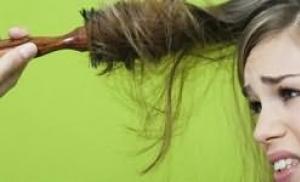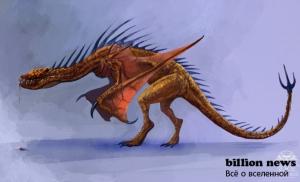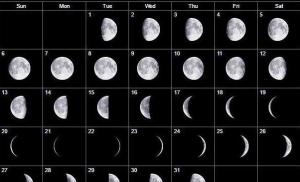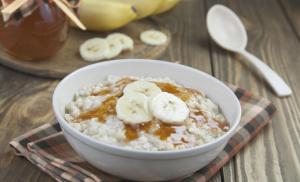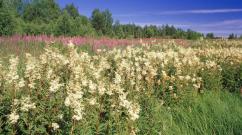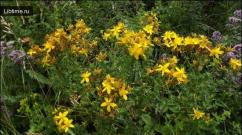Pinched nerve in the shoulder joint symptoms. We diagnose and treat pinched nerves in the shoulder joint
A common cause of pain in the upper extremities is damage to the peripheral nervous system, the branches of which provide activity to all segments of the hand, starting from the fingertips and ending with the shoulder region. Peripheral nerves act as a link between the main organ of the central nervous system - the brain and the tissues that form the upper limb:
- epithelial (skin surface);
- connective (ligaments, tendons, bones, joints);
- muscular (muscles).
Damage to the peripheral nervous system often occurs in situations where pinching occurs brachial nerve from bundles: lateral, medial, posterior. In most cases, a pinched nerve in the shoulder joint manifests itself in the form of diseases:
- plexopathies, also called plexitis, are lesions of the nerve plexuses formed by the spinal roots at the brachial level;
- tunnel neuropathies, also called neuritis - damage to peripheral nerves in anatomical tunnels (site of narrowing);
- neuralgia - a pain syndrome that occurs when sensitive receptors of the nervous tissue are irritated.
The main difference between the above conditions: with neuralgia, anatomical changes in the structure of nerve fibers are not observed or they are minimally expressed. At the same time, with plexopathies and tunnel neuropathies, obvious defects in the structure and functioning of nerve fibers are noted.
Brachial plexopathy
The disease may affect the brachial plexus in its entirety, or its individual components: primary or secondary bundles of nerves. The pathology may be the result of traumatic injury as a result of injury, compression and pinching of a nerve, or stretching of the muscle tissue of the arm. Pinching of the brachial nerve is often observed with a dislocated joint, fracture of the clavicle or first rib.
Often, damage to the brachial plexus is the result of surgery However, in this case, the restoration of the usual range of functions occurs within a few days. In some cases, plexitis occurs due to incorrect position of the hand during prolonged intravenous drip administration of medications, for example: during anesthesia. The factor that provokes plexopathy in early childhood is trauma received during childbirth.
Rarely, the cause of the development of a pathological condition is the presence malignant tumors in patients with established lymphoma, melanoma, sarcoma. In isolated cases, a pinched nerve is caused by a primary tumor of the brachial plexus.
The disease may be autoimmune in nature, developing after:
- previous cytomegalovirus or enterovirus infection;
- vaccination against tetanus, diphtheria, whooping cough.
Cases of plexitis have been recorded as a consequence of heroin addiction.
Symptoms
Brachial plexopathy manifests itself in a variety of ways neurological symptoms:
- muscle weakness in the arm;
- impaired sensitivity in the limb;
- loss of deep reflexes;
- shoulder muscle atrophy;
- severe pain burning in nature with irradiation to the distal parts of the arm;
- limited mobility of the shoulder joint;
- feeling of numbness and tingling in the hand.
If increased physical activity on the joint, swelling may be observed along the vascular beds and a bluish discoloration of the skin of the hand.
Treatment
At the peak of symptoms, the main medical goal is to reduce the intensity of pain. For these purposes, they resort to immobilization of the affected limb. It is advisable to treat plexitis with non-narcotic analgesics, non-steroidal anti-inflammatory drugs, and corticosteroid hormones. If painful sensations are perceived by the patient as relatively tolerable, they resort to physiotherapeutic procedures and massage to restore muscle trophism.
Tunnel neuropathies
The mechanism of development of this type of pathology includes a combination of factors:
- external pressure causing a pinched nerve;
- development of ischemia of nervous tissue.
The decisive role in the development of neuritis is given to prolonged traumatization of the shoulder when performing professional activities, household duties, while actively playing sports. Habitual human postures play a certain role in the formation of neuropathies, for example: the tendency to constantly keep your arms crossed on your chest.
The cause of compression of the nerve may be improper execution of intravenous injections, leading to intense muscle spasm, paralysis of a limb, severe severe pain syndrome.
Predisposing factors are:
- endocrine disorders;
- periods of hormonal changes;
- reception contraceptives;
- diabetes mellitus;
- alcoholism;
- renal failure;
- rheumatoid arthritis;
- diseases of the circulatory system.
Signs
If a pinched nerve occurs, the first symptom is intense pain, covering the entire limb and affecting cervical region. The pain intensifies with palpation of the upper arm. As the pathology develops, there is a deterioration in surface sensitivity, followed by its complete loss. The patient complains of paresthesia - a burning sensation, tingling, numbness. Partial paresis is recorded - muscle weakness. Atrophic processes are observed - a decrease in volume muscle tissue.
Treatment
The choice of program for how to treat neuritis is based on the causes of the pathology and the prevailing symptoms. At the first signs of neuropathy, before an accurate diagnosis is established, it is advisable to treat with vitamins B, C, E. Analgesics and non-steroidal anti-inflammatory drugs are used to relieve pain. It is rational to carry out acupuncture, the use of electrical stimulation methods and electrophoresis with novocaine.
If neuropathy is caused by injury, in the acute phase of the disease the patient is not recommended to move the affected limb, but to ensure that the arm remains motionless. If aggravation of movement disorders is observed, anticholinesterase agents and biogenic stimulants should be added to therapy.
Neuralgia
The formation of brachial plexus neuralgia is caused by exposure to toxic and metabolic agents, vascular disorders, pinched nerve or its roots. Peripheral nervous tissues often suffer from acute respiratory diseases, intoxication, vitamin deficiencies, and metabolic disorders. Direct damage to the brachial plexus is often observed if the patient has a history of rheumatism.
Symptoms
With neuralgia, pain sensations manifest themselves with varying variability: from aching, dull, debilitating pain to attacks of burning and tingling. When pain intensifies, a person often experiences muscle spasms, swelling of muscle tissue, and redness of the skin. In most cases, the pain spreads along the affected limb.
Treatment
During the heyday of the disease, the goal of therapy is to stop pain syndrome, which often requires a novocaine blockade. To eliminate inflammation, a course of treatment with non-steroidal drugs is recommended. To improve blood flow, ointments with a warming effect are used externally. Good result brings massage and a course of physiotherapeutic procedures.
Conclusion
If a nerve is pinched in the shoulder, development may begin chronic diseases inflammatory in nature, the main symptoms of which are severe pain over the entire surface of the arm. To prevent dystrophic processes and prevent deterioration in functionality, it is necessary to competently treat the pathology at the first unpleasant symptoms.
Pain from a pinched nerve is called neuralgia. She is treated with medicines and physiotherapy. In case of inflammation of the compressed vasodilator (neuritis, plexitis), surgery is possible.
Neuralgia or pinched brachial nerve is manifested by pain in the muscles surrounding it. Without treatment, the condition is complicated by inflammation of the compressed fibers of the NS (nervous system) or the entire plexus, and the development of plexitis or neuritis can even result in disability. It is important to start therapy in a timely manner to eliminate pressure on the NS structures.
Symptoms of a pinched brachial nerve and treatment of neuralgia
Pinched nerve (vasodilator) is the pressure effect of surrounding tissues on its fibers, which disrupts the normal passage of impulses. It is accompanied only by pain without changes in the structure of the bundle and muscles, which is why doctors use the term neuralgia.
Wedding night syndrome or honeymoon paralysis is the name given to the disease in single men, provided that there are no other reasons for its development.
A nerve can be pinched in any part of the body, but more often it occurs in the area of the shoulder, pelvic joints or spine. The pain syndrome is equally expressed in neuralgia and its complications. The use of decompression methods is important in treatment.
Causes of brachial neuralgia
More often, compression of the nerve is provoked by spasm and swelling of the muscles of the shoulder girdle. The process starts against the background of injury, infectious diseases, hypothermia, and physical stress. Enlarged in the affected area muscle fibers begin to pinch the nerve, irritating the endings and causing pain. Another main reason for compression of the vasodilator is articular pathologies in the shoulder girdle area.
Against the background of cervicothoracic osteochondrosis, omarthrosis and arthritis, the nerve is pinched:
- enlarged capsule of the affected joint;
- deformed bone;
- narrowing of the lumen of the canal in which the roots and fibers of the NS lie.
Less commonly, neuralgia is caused by other pathological causes: endocrine diseases, metabolic disorders, poisoning, neoplasms. During pregnancy, a nerve can be pinched when wearing an incorrectly selected bandage.
Signs and diagnosis of brachial neuralgia
With neuralgia, the pain is localized in the shoulder area and along the path of the pinched vasodilator. It can be burning, sharp, severe or dull, and can radiate to the forearm, armpit, neck, and torso. “Blasts” often occur. The pain is constant or occurs in attacks during movements or massage.
A pinched nerve in the shoulder joint is diagnosed using the following methods:
- physical examination by a neurologist;
- radiography;
- tomography (MRI or PET-CT);
- laboratory tests of blood, urine, synovial fluid.

Doctors differentiate between neuritis and plexitis. Distinctive symptoms of brachial nerve entrapment are the absence of muscle atrophy, numbness, and reflex disorders.
Therapeutic methods for brachial neuralgia
If a nerve is pinched, the shoulder needs to be rested. Bandages supporting bandages are used. Treatment uses methods that eliminate vasodilator compression and symptoms of neuralgia.
Used groups of drugs:
- ointment, injections or tablets of Diclofenac, other NSAIDs - to relieve inflammation;
- Ketanov, antispasmodics, analgesics, novocaine blockade - painkillers;
- IM injections of the drug Neurobion - a complex of B vitamins, accelerates the regeneration of nerve fibers.
Symptoms are also eliminated by electrophoresis, mud therapy, treatment of the diseased area with ozokerite and/or ultrasound, magnetic field, other physiotherapy procedures. A pinched nerve in the shoulder can be eliminated with the help of exercise therapy, swimming pool exercises, massage, and acupuncture.
Characteristics of plexitis and methods of its treatment
"Plexitis" in medical terminology means inflammation of the entire plexus of nerves around shoulder joint or in the cervical, lumbar or sacral spine. It manifests itself as pain, dysfunction of the NS and upper limb, other symptoms. It is more difficult to treat plexitis; in advanced situations, disability often occurs.
Cause of brachial plexitis
The brachial plexus often becomes inflamed due to prolonged pinching of the nerve adjacent to the joint. The second reason is considered physical inactivity, performing work in an awkward position, and wearing tight bandages. Often, brachial plexitis occurs due to cervicothoracic arthrosis, omarthrosis, long-term use of crutches, and wedding night syndrome.

The mechanism of development of plexitis
In the neurological stage, when the vasodilator is pinched, irritation of its fibers begins, and the neurons stop transmitting impulses. This triggers the corresponding biochemical reactions: cholinesterase may increase and peptide synthesis may increase.
Over time, the initially pinched nerve becomes inflamed (neuritis develops), and then the process covers the entire brachial plexus or its individual trunks. At the paralytic stage of plexitis, muscle paresis is added to pain and tissue hyperemia: the person’s motor ability of the fingers or the entire hand is impaired.
Signs of brachial plexitis
In the neurological stage of plexitis, pain in the shoulder area is constant, but can also occur periodically. It can be boring, burning and aching, often radiating to the forearm, torso, and neck. The soft tissues around the nerve plexus swell, the local temperature rises, and the skin turns red. In the paralytic stage, due to paresis, the mobility of the limb, sensitivity in the hand and fingers are reduced, and dystrophic changes muscles.
Diagnostic methods for plexitis
If there is no injury or joint disease, contact a neurologist. He conducts an examination, analyzes complaints, and refers for an electrophysiological study of the functions of nerves and muscles. These are electromyography and electroneurography. To identify the causes and consequences of plexitis, X-rays and tomographic diagnostics are performed.
Treatment methods for plexitis
Brachial plexitis is treated comprehensively: medications, physiotherapy, they can be supplemented with folk remedies. Therapy methods eliminate the causes of pinched nerves, relieve symptoms, and restore the functions of the vasodilator, muscles, shoulder joint and other joints of the arm.

Drug therapy
To eliminate pain and other symptoms, the patient is given a novocaine blockade, oral analgesics, intramuscular injections of B vitamins, local and systemic NSAIDs. In the paralytic stage, cholinesterase blockers, lidase, and adenosine triphosphoric acid are additionally used. For infectious plexitis, antibiotics or antiviral medications are prescribed.
Exercise therapy and massage
Therapeutic gymnastics is carried out under the supervision of a specialist after removal acute symptoms. Exercise therapy uses rotational and oscillatory movements in the shoulder and other joints, bringing the shoulder blades together, warming up the fingers and other exercises to strengthen muscles and tendons.
Does massage chiropractor if there is no pain for at least three days. The movements are aimed at intense kneading of the muscles of the shoulder girdle, arms and back.
Physiotherapy
Physiotherapy is supplemented with water procedures, mud applications, and radon baths. To restore the conductivity of the vasodilator, neuroelectric stimulation and acupuncture are used. Inflammation and pain are eliminated by electrophoresis, treatment of the shoulder joint area with ultrasound, UHF, laser radiation, magnetic field.
Surgical treatment
Surgeries are performed when a nerve is compressed by a tumor, an aneurysm (bulge) of an artery, or a deformed bone. The surgeon performs autoplasty, sympathectomy, decompression of the trunks or excision of tumors. In functional neurosurgery, a neurostimulator can be implanted.
Traditional medicine methods
At home, before going to bed, take 15-minute general baths with a decoction of valerian, mint or sage. The water temperature should be 37–37.5º C. The procedure reduces the symptoms of inflammation and relieves muscle spasms.

Lapacho tea and herbal infusion of lingonberry leaves are consumed internally. Mud wraps, warm compresses, medical bile, and ointments with mumiyo and propolis are applied to the joint area and muscles of the shoulder girdle.
Preventing pinched nerves
Preventing a pinched nerve is an exception possible reasons brachial neuralgia. You need to properly distribute physical activity, do gymnastics daily, and sleep on an orthopedic mattress.
To prevent vitamin deficiency and metabolic disorders, you need to eat well. Hypothermia must not be allowed. It is advisable to conscientiously undergo routine medical examinations and treat identified diseases.
Complications from a pinched nerve
A pinched nerve in the shoulder joint is often complicated by an inflammatory process (neuritis, plexitis). Lack of treatment for these diseases or neuralgia leads to a decrease in the muscle tone of the arm. Over time, degeneration of muscle fibers develops, and paralysis of the limb or shoulder girdle begins.
Conclusion
Pinched nerves in the shoulder often occur due to hypothermia and physical inactivity, so it is undesirable to ignore morning exercises, strengthening the immune system and hardening the body. If neurological pain occurs, you should immediately consult a doctor and undergo treatment. This will prevent the development of plexitis, arm paralysis, and expensive therapy.
Among post-traumatic complications, pinched nerves in the shoulder joint are common. When nerve tissue is compressed, pain, stiffness and limited movement of the joint, and a feeling of numbness are observed. At the first symptoms, you should immediately consult a doctor, as the condition is dangerous due to complications. Only a specialist can prescribe adequate treatment, which will help avoid serious complications.
Why does infringement occur?
The most commonly affected nerves are the radial, median or axillary nerves, as well as the brachial nerve bundles. The condition is preceded by the following factors:
- fresh or old bruises, dislocations, fractures;
- unsuccessful intra-articular injections;
- direct blow to the shoulder;
- long-term compression of nerves due to professional activity or temporary physiological condition;
- regular lifting of weights;
- postoperative complications;
- malignant or benign neoplasms in the armpit area;
- uncomfortable posture during sleep;
- osteoarticular diseases;
- constant contact with poisons and chemicals.
Symptoms: how does impingement in the shoulder joint manifest?
 The sensitivity of the fingers is significantly reduced.
The sensitivity of the fingers is significantly reduced. If the nerve endings of the shoulder are pinched, the following symptoms may be observed:
- morning stiffness or stiffness in the damaged joint;
- temporary or permanent numbness in the fingers;
- limited movement of the phalanges and forearm;
- soreness in the extensor muscle area;
- muscle weakness when grasping or holding an object;
- the appearance of a nervous tic;
- difficulty holding your arm outstretched forward;
- hyperhidrosis during painful attacks;
- pallor or redness of the skin at the site of the lesion.
Diagnostic measures
If symptoms of infringement occur, you should contact a neurologist or orthopedist. The doctor listens to complaints, collects anamnesis and assesses the state of limb mobility. A specialist can make a diagnosis if the following signs are observed during examination:
- the patient cannot clench his fingers into a fist;
- the little finger and thumb do not move apart;
- the hand, lowered along the body, does not turn forward with the palm and it is impossible to move the thumb away.
 The study will determine the extent of damage to soft and bone tissue.
The study will determine the extent of damage to soft and bone tissue. To determine the exact cause of the pinching, the doctor additionally prescribes x-rays, ultrasound, CT or MRI. Methods allow you to determine:
- presence or absence of old injuries;
- tissue structure of the shoulder joint;
- possibility of bone displacement;
- condition of surrounding tissues;
- presence of tumors or cysts.
Treatment: how to proceed correctly?
Drug therapy
The sooner treatment is started, the lower the risk of complications.
If a nerve is pinched, in severe cases surgery is required to eliminate the cause. Conservative treatment includes the use of the following drugs:
The use of folk remedies
 The product is applied directly to the site of inflammation.
The product is applied directly to the site of inflammation. You can treat a pinched nerve at home using baths with herbal decoctions of chamomile, sage, oak bark, woodlice, and St. John's wort. You can apply dry warm compresses with sea salt or sand. Rubbing with wormwood, a decoction of which is prepared as follows:
- Take 2 tbsp. l. herbs and pour 300 ml of hot water.
- Leave for 2 hours, filter.
- Rub your shoulder several times a day.
- Take 30 g of mint, parsley seeds and dandelion roots.
- Add 500 ml of water and boil.
- Leave for several hours.
- Drink 20 g on an empty stomach.
Consequences of a pinched nerve in the shoulder
 Brachial plexitis can cause disability.
Brachial plexitis can cause disability. If a compressed nerve is not treated, it may become inflamed. In addition to the disease, the condition is dangerous due to the occurrence of the following pathologies:
- partial or complete limb dysfunction;
- chronic pain syndrome;
- decreased fine motor skills;
- loss of ability to work;
- complete loss of sensitivity;
- limb paralysis.
Prevention
To prevent the nerve from being pinched in the future, it is recommended to develop the joints by doing gymnastics daily. Osteoarticular diseases should be treated promptly. During sedentary work, you need to take breaks and warm up. The work chair must have armrests. Weights should be distributed evenly on both hands, and instead of a bag, use a backpack with an orthopedic back. It is also recommended to adhere to a diet and prevent the appearance of overweight bodies.
A pinched nerve in the shoulder joint is a fairly common pathology that can develop in both women and men at absolutely any age. Symptoms can also vary - from a feeling of goose bumps on the skin to a complete inability to move your arm.
It is very important to consult a doctor at the first symptoms and not self-medicate, as this can lead to very sad consequences. Surgical treatment may also be necessary.
A pinched nerve can happen for several reasons, but it occurs when the nerve fiber is compressed by bone or other tissues that are nearby. As a result, the nerve bundle begins to become inflamed and swelling appears. The main provoking factors are considered:
- Diseases of the central nervous system.
- Professional sports.
- Shoulder injuries or bruises.
- Complications after operations or injections.
- Sleeping in an awkward position.
- Sedentary lifestyle.
- Neoplasms.
- Intoxications that are chronic.
How it manifests itself
If the brachial nerve is pinched, the symptoms of this condition will be very pronounced. The patient complains of fullness on his arms after sleep. There is also difficulty in moving the hand or in the joint itself. It is impossible to hold the hand in a suspended position; difficulties arise when extending or bending the wrist.
Aching, stabbing or even cutting pain is constantly felt in the forearm, which can increase or decrease depending on the position of the hand. There may be complaints of increased sweating, feeling hot, and pale skin. This is due to disruption of the nervous system and conductivity.
The first finger of the hand is retracted with great difficulty. The second finger cannot be brought to the first. There are also problems with clenching a fist. Muscle tone changes greatly. Without treatment, their atrophy begins. In the future, it is very difficult to restore muscle strength.
Diagnostics
Before doing anything about a pinched brachial nerve, you should definitely visit a doctor and make an accurate diagnosis. This can be done based on the patient’s complaints, when collecting an anamnesis, a neurological examination is carried out, the sensitivity of the fingers and tendon reflexes are checked. Diagnosis, and then treatment, should only be done by a neurologist.
If there is any doubt about the diagnosis, as well as to identify the causes of nerve compression, it is necessary to undergo an MRI or CT scan. Sometimes the doctor may opt for radiography.
How to get rid
 What to do if the brachial nerve is pinched? First you need to find and eliminate the cause. This will help relieve both pain and all existing symptoms. Therefore, therapy will depend only on this.
What to do if the brachial nerve is pinched? First you need to find and eliminate the cause. This will help relieve both pain and all existing symptoms. Therefore, therapy will depend only on this.
Painkillers may be used to relieve pain. If they do not help, then the nerve ending is blocked with novocaine. Only a doctor can do this in a hospital setting.
Anti-inflammatory drugs from the NSAID group are used to relieve inflammation. This could be ortofen, diclofenac, nurofen and many others. It is better to use them in tablet form. But ointments and gels will not help in this case. It is better to leave them for the recovery period.
To improve the functioning of the nervous system, B vitamins should be included in the treatment, which are recommended to be administered intramuscularly in dosages specified by the doctor. The course can be up to 30 injections and should be repeated several times a year.
Against the background of the disease, due to constant pain, various depressive states. To relieve anxiety and insomnia, your doctor may prescribe antidepressants. But you can buy them only with a doctor’s prescription and in no case should you exceed the indicated dosage.
If treatment is started as early as possible, then most often it will have a favorable outcome. It is also necessary to find the cause that leads to pinched nerve and eliminate it. Surgery may be necessary here, especially in the presence of neoplasms.
What else can be done if a nerve is pinched in the shoulder joint? After relieving inflammation and pain, you should definitely take a UHF course, take warm baths with medicinal herbs(as prescribed by a doctor), do mud wraps, use paraffin and ozokerite as treatment.
Until complete recovery and the end of the rehabilitation period, you should not engage in physical activity on your arm, avoid hypothermia, and be sure to complete a full course of exercise therapy.
By the way, you may also be interested in the following FREE materials:
- Free books: "TOP 7 harmful exercises for morning exercises that you should avoid" | “6 Rules for Effective and Safe Stretching”
- Rehabilitation of knee and hip joints for arthrosis- free video recording of the webinar conducted by a physical therapy and sports medicine doctor - Alexandra Bonina
- Free lessons on treating low back pain from a certified physical therapy doctor. This doctor has developed a unique system for restoring all parts of the spine and has already helped more than 2000 clients with various back and neck problems!
- Want to know how to treat a pinched sciatic nerve? Then carefully watch the video at this link.
- 10 essential nutritional components for a healthy spine- in this report you will find out what your daily diet should be so that you and your spine are always in good health. healthy body and spirit. Very useful information!
- Do you have osteochondrosis? Then we recommend studying effective methods treatment of lumbar, cervical and thoracic osteochondrosis without drugs.
Pinched brachial nerve is a common pathology that can cause loss of sensation and immobility of the upper limb. To prevent such complications, it is necessary to promptly identify and treat the disease.
Causes of the disease
A pinched nerve in the shoulder joint is often confused with nerve inflammation, but these are two different neurological pathologies that have similar symptoms. Although, if treatment is untimely or inadequate, pinching may result in an inflammatory process, in order to prevent this complication it is necessary to pay attention to the first symptoms and seek qualified medical help.
According to the mechanism of the disease, pinching is the result of compression of nerve bundles by nearby muscles and bone tissues, which become swollen as a result of inflammation. There are many reasons for the development of this pathology, but most often it is:
- an uncomfortable position during sleep, which people say is a “stuck” hand;
- excessive physical exertion during sports or weight lifting;
- shoulder injuries of various types;
- as a result of incorrectly performed or complicated surgical interventions or injections in the forearm or shoulder;
- oncological neoplasms;
- diseases of the central nervous system;
- for chronic lead poisoning.
Clinical manifestations
To effectively treat a pinched nerve, it is necessary to: early stage consult a neurologist who will conduct an examination, collect an anamnesis of the disease, and, if necessary, prescribe additional methods research and prescribe a course of adequate treatment.
The symptoms of this disease may differ for each patient, but absolutely all patients experience characteristic pain that disrupts the patient’s quality of life. The pain can be of a different nature; it can be dull and aching, or, on the contrary, it can be sharp and paroxysmal. In any case, the patient notices alarming symptoms and understands that a pinched nerve has occurred, which is the cause of severe pain.
During attacks of pain, the patient experiences weakness and increased sweating. There may also be a sensation of tingling, spasms and muscle twitching that cannot be called pleasant. At the site of the lesion, the skin may change its usual color. In some patients, the skin at the pinched site becomes pale, while others note persistent hyperemia.
In the mornings and at night, patients note the appearance of the symptom of “crawling goosebumps”, which turns into complete numbness of the fingers. Most often these are the thumb, index and middle fingers. The patient's half-bent arm is almost impossible to straighten.
This pathology does not pose a particular danger to the patient’s future life, but in the absence of proper therapy, the pathological process can progress until complete loss of function and muscle atrophy.
Features of treatment
The doctor determines the management tactics for each patient individually. Before prescribing a therapeutic course, it is necessary to conduct a number of additional studies, the purpose of which is to exclude injury, fracture or neoplasm. In most cases, treatment is carried out conservatively, but in particularly advanced situations, surgical intervention may be considered. The need for surgery arises when the integrity of the nerve is damaged.
Conservative therapy is aimed at:

It has proven itself to be quite effective in the treatment of pinched nerves. traditional medicine. This and other methods will be discussed in more detail below.
At the site of a pinched nerve in the arm, as a result of the pathogenesis of the disease, nearby tissues swell, further aggravating the situation. To alleviate the patient’s condition and improve trophism and innervation, it is necessary first of all to relieve swelling and spasm. For this purpose, decongestant (diuretic) drugs are prescribed. These are Furosemide, Lasix, diuretic herbal preparations.
Among antispasmodic drugs, it is advisable to use Spazmalgon, Tempalgin, Drotaverine. It is no less effective to prescribe non-steroidal anti-inflammatory drugs, which will not only relieve inflammation, but also eliminate pain. It is best to use Ibuprofen, Nurofen, Diclofenac, Olfen, Dikloberl for this purpose.
Duration of treatment course and necessary list Medications will be determined by the attending physician, taking into account the severity of the disease and the individual characteristics of each patient.
Physiotherapy in the fight against nerve pinching
It is not possible to effectively treat pinched nerves without physiotherapeutic procedures and massage, which are aimed at relieving spasm, pain and swelling. Physiotherapeutic procedures include UHF, magnetic resonance therapy, acupuncture, electrical stimulation, warm medicinal baths, wraps with mud or ozokerite.
During the treatment period, the patient is contraindicated from physical activity on the affected arm and hypothermia. You should carefully follow all the doctor’s instructions in order to forever forget about such a disease as pinched nerve of the shoulder joint.
During the rehabilitation period, it is advisable to perform a set of exercises physical therapy under the guidance of an experienced medical professional.
Traditional recipes will relieve pain
Traditional medicine knows many natural medicines that help get rid of pinching, but their use is allowed only after the approval of the attending physician. It is worth noting that these are mainly decoctions, tinctures and liniments for external use on the sore hand.
A decoction of wormwood will help get rid of the hated pain that accompanies any nerve pinching. To prepare this, you will need 20 grams of dry wormwood herb, which is brewed in 300 ml of boiled water. The decoction is infused for 2 hours, after which it is applied to the affected area of the body with slow rubbing movements. Herbal baths will help relieve attacks of pain and alleviate the patient’s condition. A bath with a decoction of chamomile or sage with the addition of sea salt has proven itself well. For one procedure you will need 1 liter of concentrated herbal decoction and 30-50 g of sea salt. Water temperature 38-390. The duration of the procedure is 10-15 minutes. It is worth noting that pine baths can also be used for this pathology.
Teas prepared from the leaves and berries of lingonberries, raspberries and strawberries will help relieve swelling of the tissues on the hand and inflammation. In addition to its excellent taste, this drink will be an excellent diuretic. 
Bee products are also indispensable for inflammation and pinched nerves. You can make wraps from natural honey, but an application of propolis and olive oil will be much more effective. Alcohol tincture is prepared from 15 g of propolis and 50 ml medical alcohol. Both ingredients are mixed and infused in a dark place for 10-14 days. After this, the finished tincture is filtered and mixed with olive oil in the ratio of 10 ml of alcohol tincture you need to take 50 ml of oil. This substance is applied to painful areas of the body as a compress at night.
In addition to all of the above treatment methods, it is necessary to carry out regular prevention of the disease. This is, first of all, sports, exercise therapy, getting rid of extra pounds. You also need to be especially careful when lifting weights, monitor your posture and constantly develop flexibility. After all, as you know, timely prevention is much more effective than treatment.
